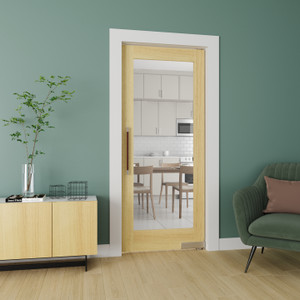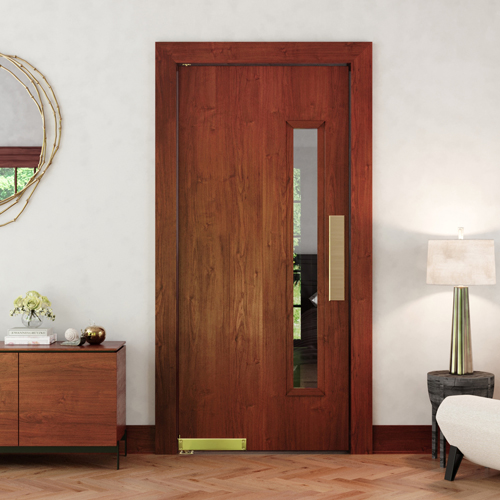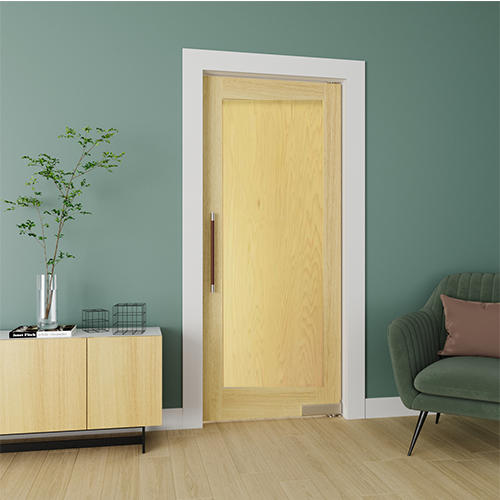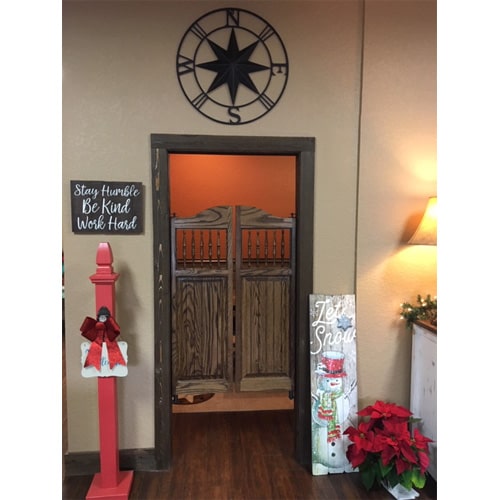
Stylish Functional Interior Doors: Cafe Door Innovations
Advanced Materials for Stylish Interior Doors: Fusing Aesthetics with Functionality
In the tapestry of interior design, the humble door often emerges as an unsung hero, quietly playing a pivotal role in both our home's aesthetics and functionality. As the architecture world evolves, the traditional wooden door is being nudged aside by a diverse array of advanced materials, each offering its unique blend of luxury, sustainability, and technological integration. For interior design enthusiasts, homeowners, and architects, the adoption of these advanced materials represents not only a shift in taste but also a stride toward a more intricately designed living space. In this post, we'll explore the inexorable march towards innovative interior door materials, their advantages, and how they acknowledge and enhance the very essence of contemporary living spaces.
Key Takeaways :
- Durable and sustainable: engineered wood, glass/metal, and composites resist warping and extend service life.
- Design-forward and smart: minimalist or statement aesthetics, light/texture options, plus smart locks and integrated lighting.
- Practical ROI: understand maintenance differences; higher upfront cost often returns value through longevity and resale.
The Essence of Interior Doors in Home Design
The interior door stands at every home's threshold, marking the division between spaces and encapsulating the very essence of privacy and personal space. It is no surprise, then, that interior doors demand as much attention in the design process as any other element of a home. With the function to not only delineate rooms but also to aid in energy efficiency, sound insulation, and privacy, the choice of materials for these doors is imperative, and the move towards advanced materials is a conscious design choice that can dramatically elevate the interior space.
Advantages of Advanced Materials in Door Design
The incorporation of advanced materials in interior doors signifies a departure from the ordinary, ushering in a host of benefits that are resonating deeply with homeowners and designers alike. These materials offer better resistance to wear and tear, increased longevity, and even better environmental stewardship by either using recycled content or being fully recyclable themselves. Additionally, they can tackle the perennial problem of warping and cracking, often associated with traditional wood, while providing a formidable canvas for artistic expression through innovative door designs and styles.
Increased Durability and Sustainability
With advanced materials, interior doors can withstand the test of time with minimal wear, a testament to modern engineering and a commitment to sustainable resources. As global consciousness shifts towards eco-friendly solutions, interior doors crafted from advanced materials provide an opportunity to reduce our ecological footprint without compromising on style or substance.
Exploring Popular Advanced Door Materials
A cornucopia of materials awaits those venturing into the realm of modern interior doors. From the intricate patterns and warmth of engineered wood to the sleekness and transparency of glass-metal fusion, each material has its own story to tell.
Engineered Wood: A Modern Classic
Engineered wood, while capturing the essence of natural timber, is a triumph of material science, offering enhanced stability and resistance to moisture. Its versatility allows for a myriad of finishes, textures, and colors, making it an ideal canvas for custom doors that blend effortlessly with various design themes.
Glass and Metal Combinations: The Future Is Clear
The use of glass, often in combination with metal, introduces an element of contemporary chic to interior spaces. These door variants capitalize on natural light, creating an illusion of space, while the integration of metal components provides a robust framework that complements a variety of architectural styles.
Innovative Composite Materials
Innovative composite materials are pushing the boundaries of what an interior door can be. Carbon-neutral options like high-density plastics not only provide exceptional strength and durability but also present a canvas for the most cutting-edge of designs, including 3D-printed textures and patterns that were previously unattainable. Great for exterior applications.
Design Trends and Aesthetics
Interior door design is not just about functionality; it is also a significant element in setting the mood of a space and contributing to the overall style of a room. In the design trends section, we spotlight the current popular aesthetics that are being achieved with advanced door materials.
Minimalist Styles: Less is Luxe
The minimalist movement continues to influence interior design, with 'less is more' becoming an increasingly popular ethos for many homeowners. Advanced material doors perfectly encapsulate this style, offering clean lines, simple designs, and a focus on the quality of materials over ornate details.
Statement Pieces: Doors as Art
Doors have the potential to be significant design statements within a home, telling their own unique story. With advanced materials, doors can now become focal points, whether through the use of bold colors, textured materials, or striking patterns that demand attention and encourage conversation.
Integration with Smart Home Technology
The modern home is replete with technology, and interior doors are no exception. As smart home integration gains traction, advanced doors are being outfitted with digital locks, integrated lighting, and even touch-sensitive controls, not only adding a futuristic element to the decor but also improving convenience and security.
Practical Considerations When Choosing Advanced Doors
Selecting an interior door is a long-term investment in your home, and there are practical considerations that should be weighed alongside aesthetic preferences.
Maintenance and Longevity
Understanding the maintenance requirements of different door materials is key to ensuring their longevity and continued appeal. Engineered woods may require occasional refinishes, whereas glass and metals are often easier to keep clean but can be prone to scratches and smudges.
Cost-Effectiveness and Long-Term Value
While advanced materials may come with a higher upfront cost, their durability often translates to cost-effectiveness over time. By choosing a door that requires less frequent replacement or refurbishment, homeowners can save money in the long run and benefit from a higher resale value on the property.
Conclusion: The Allure of Advanced Door Materials
The role of interior doors within the home has shifted from mere function to a critical part of the design narrative. Advanced door materials not only enhance the aesthetic appeal of our living spaces but also promise a robust response to the demands of modern homes and the people living in them. By choosing advanced materials for interior doors, homeowners and designers are making a conscientious decision to invest in the longevity, sustainability, and beauty of their interior spaces.
In this final section, we tie together the impact of advanced door materials and how they encapsulate the ethos of modern design. We illustrate how choosing one's door material is not just about durability or style, but a means of expression that weaves seamlessly into the fabric of our homes.
The home is a reflection of personal taste, and in the realm of interior design, it is the meticulous attention to detail that often distinguishes the ordinary from the extraordinary. With the innovative use of advanced materials in interior doors, we are witnessing a redefinition of what it means to craft a living space that is not just stylish but also sustainable and technologically adept. It is an exciting time for door design, where the intersection of aesthetics and functionality opens up a world of possibilities, and where each doorway becomes an invitation to uncover the stories within.




